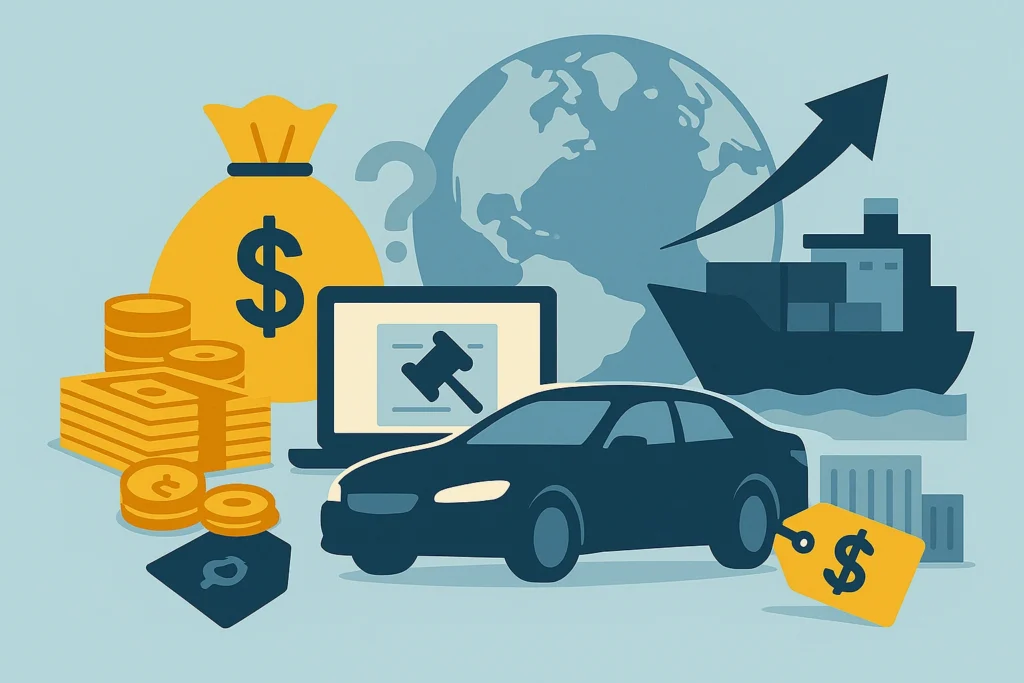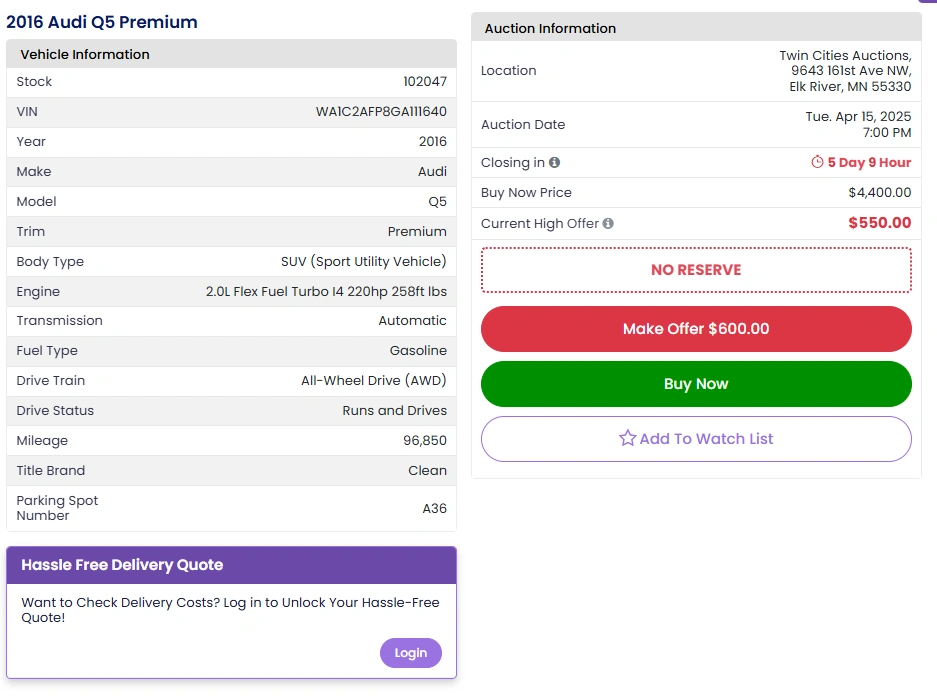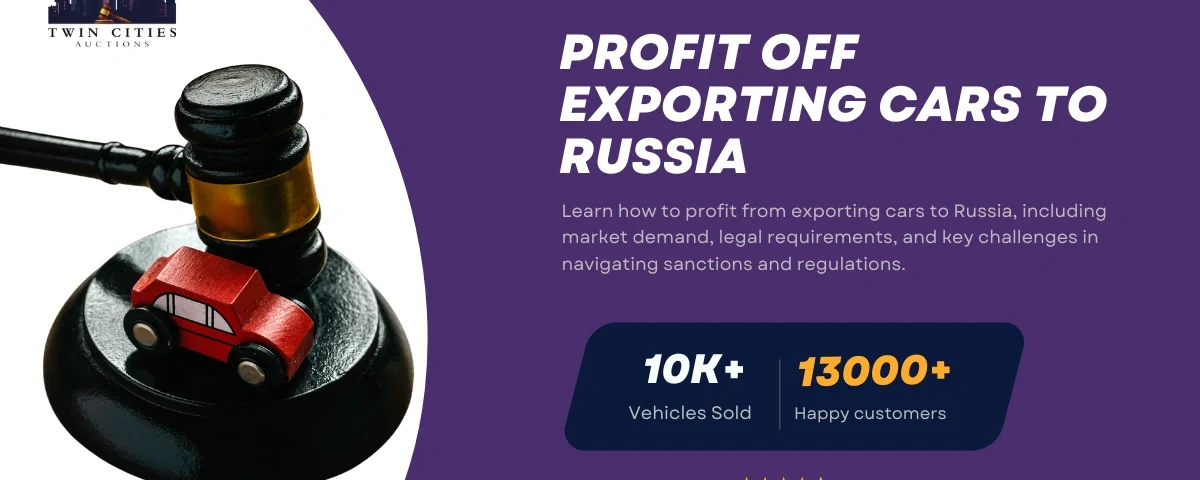The booming appetite for passenger vehicles in Russia is turning heads in the global auto trade. In 2023 alone, the country imported 1,093,800 cars, including 706,700 new and 387,100 used, according to AUTOSTAT, signaling massive opportunity for savvy exporters.
With average retail prices hitting around $30,000 for new cars and over $11,000 for used, the Russian market offers U.S. dealers and entrepreneurs a profitable gateway into international car sales, despite ongoing geopolitical and logistical hurdles.

Key Takeaways
- Russia imported over 1 million vehicles in 2023, highlighting strong demand for both new and used cars and creating a ripe opportunity for U.S. exporters.
- High average resale prices, $30,000 for new and $11,300 for used, offer strong profit margins when exports are priced and planned correctly.
- Successful exports require critical documents like the Commercial Invoice, CMR Waybill, EAC/GLONASS certificate, and GOST Certificate for customs clearance.
- A detailed landed cost model covering FOB, freight, duty, VAT, and local fees is essential to ensure profitability and mitigate risk.
- Auctions like Twin Cities Auctions offer transparent vehicle sourcing, verified titles, and online bidding, ideal for reliable and scalable inventory.
- Avoid common pitfalls such as misjudging taxes, skipping pre-export inspections, or lacking local support to prevent costly delays or rejections.
Understanding the Russian Market
Russia’s used car market is driven by demand for affordability, durability, and availability amid ongoing global supply chain constraints.
The weakening ruble and import restrictions on new vehicles have pushed more buyers toward reliable used cars, especially Japanese and Korean models.
Consumers often prefer vehicles with simpler electronics, making U.S. exports attractive when they align with this preference.
Market conditions fluctuate rapidly due to geopolitical and economic factors, so exporters must stay updated on policy changes and currency movements.
Used cars over three years old accounted for 35% of imports, driven by model shortages and currency shifts.
| Segment | 2023 Volume | Avg. End-2024 Price |
| New (≤ 3 yrs old) | 706,700 | 3.12 M RUB (~$30 000) |
| Used (> 3 yrs old) | 387,100 | 1.18 M RUB (~$11 300) |
Source: AUTOSTAT
Regulations & Compliance
All vehicles under HS code 8703 must meet Russian Customs and technical standards.
| Document | Purpose | Processing Time |
| Commercial Invoice | Declares sale price and transaction parties | Immediate |
| CMR Waybill | Proof of international transport | Immediate |
| EAC/GLONASS Certificate | Verifies satellite-navigation compliance | 3–7 days |
| GOST Certificate of Conformity | Confirms safety & emission compliance | 1–3 days |
Sources: U.S. Export.gov; U.S. Trade.gov
Crafting Your Landed Cost Model
An accurate landed-cost model ensures you maintain target margins.
| Cost Component | Calculation Basis |
| FOB Purchase Price | Agreed U.S. port price |
| Freight & Insurance | Ocean freight plus cargo insurance |
| Customs Duty | Russian tariff on HS 8703 classification |
| VAT (20 %) | Applied to [FOB + Freight + Duty] |
| Local Fees | Broker, port handling, storage |
Aim for a 10–15 % markup over total landed cost to buffer FX fluctuations and resale expenses.
Logistics & Shipping Routes
Russia’s vast geography means choosing the right port of entry is crucial for timely delivery and cost control.
St. Petersburg is ideal for Western Russia, while Vladivostok services Eastern buyers, especially those near the Japanese and Korean borders.
Port congestion and political restrictions can delay shipments, so having alternate routes or contingency plans is wise.
Freight forwarders experienced in Eurasian logistics can help navigate customs and route planning more effectively.
- St. Petersburg: Major Baltic port with frequent container services
- Ust-Luga: Fast Baltic Sea transit for Northern Europe routing
- Vladivostok: Pacific-side entry for Asia-origin shipments
(Confirm schedules and rates with your freight forwarder.)
Financing & Payment Security
Financial transactions with Russian partners carry unique risks due to sanctions, currency volatility, and banking restrictions.
It’s crucial to conduct due diligence on buyers and rely on secure payment structures like letters of credit or escrow services.
Open accounts should be reserved for established partners with a solid track record. To protect profits, exporters should consider FX forward contracts to lock in favorable exchange rates ahead of shipping.
- Letters of Credit: Bank-backed payment guarantee
- Open Account: For trusted, recurring partners
- Escrow Services: Funds held until delivery and document verification
- FX Forward Contracts: Lock in RUB/USD rates to hedge currency risk
Common Pitfalls to Avoid
Many exporters fail by underestimating regulatory complexity and over-relying on outdated cost models.
Overlooking GLONASS compliance or skipping pre-export inspections often leads to customs delays or rejected shipments.
Documentation inconsistencies—especially with invoices or waybills—can result in fines or weeks-long holds.
To succeed in Russia, build relationships with trusted in-country agents and invest in ongoing compliance monitoring to keep ahead of changing regulations.
| Pitfall | Description |
|---|---|
| Underestimating Duty & VAT | Always calculate VAT at 20% on the total of FOB, freight, and duty. |
| Skipping Pre-Export Inspections | Missing GLONASS or mechanical issues can halt customs clearance. |
| Overlooking EAC/GLONASS Requirements | Non-compliant units may face retrofit delays and incur storage fees. |
| Poor Documentation Management | Inconsistent or incorrect paperwork can trigger fines and release delays. |
| Neglecting Local Partnerships | Handling clearance alone often results in procedural mistakes and delays. |
| Relying on Spot Rates Only | Lock in freight and FX contracts to avoid unexpected cost spikes. |
| Ignoring Market Trends | Stay updated on ruble strength and regulation changes to adjust pricing. |
Best Practices for Maximizing Profit
- Partner with Local Forwarders & Brokers
Streamline customs clearance and minimize detention charges. - Time Shipments to RUB Strength
Export when Russia’s ruble is favorable to boost USD margins. - Utilize Bonded Warehouses
Defer duty and VAT until sale commitments are finalized. - Consolidate Multiple Vehicles
Achieve volume discounts by grouping exports per container or Ro-Ro booking. - Offer Value-Added Services
Pre-sale inspections or minor reconditioning command premium resale prices.
Why Auctions Are a Smart Choice for Car Purchases
Auctions can be an excellent source for late-model vehicles with clear chains of title and affordable pricing. Twin Cities Auctions, based in Minnesota, is one such reputable auction house that offers a wide range of vehicles at competitive prices.
Key Benefits of Buying from Auctions:
- Wide Selection: Auctions like Twin Cities Auctions offer a variety of vehicles, from low-budget cars to high-end models.

- Competitive Pricing: Auctions often offer vehicles at prices below retail value, enabling dealers to maximize their profit margins.

- Transparency: Auctions provide full vehicle history reports, so you know exactly what you’re buying.

- Convenient Bidding: Many auctions offer online bidding for your convenience, making it easier to source vehicles without being physically present.
Twin Cities Auctions: A Smart Vehicle Sourcing Choice
For those in the automotive industry, Twin Cities Auctions offers an excellent platform for sourcing quality vehicles at competitive prices.
Whether you are just starting or expanding your business, this auction house provides transparency, competitive pricing, and a broad selection.
| Feature | Description |
| Inventory Variety | Wide range of cars, trucks, and SUVs available |
| Competitive Pricing | Below-market pricing allows for higher profit margins |
| Vehicle History Reports | Detailed history reports for every vehicle |
| Online Bidding | Convenient online bidding options for dealers |
| Financing Options | Financing available to help with inventory purchases |
Conclusion
Exporting cars to Russia can deliver robust margins when you accurately model landed costs, rigorously adhere to compliance requirements, and strategically manage logistics.
With Russia continuing to show strong demand for both new and used vehicles, the market presents significant potential for dealers and entrepreneurs willing to navigate its regulatory landscape.
Sourcing through transparent auctions like Twin Cities Auctions enhances supply access, ensures clear title documentation, and offers pricing advantages that are hard to beat.
By building the right partnerships, staying informed on evolving Russian import rules, and leveraging cost-effective logistics routes, you can position your business to profit consistently while minimizing risk.
Whether you’re scaling your export operations or entering the Russia market for the first time, preparation and reliable sourcing are key to long-term success.
Find Your Next Ride Online at Twin Cities Auctions—No Dealer License Required
Searching for your next vehicle? Twin Cities Auctions offers an online, transparent car auction experience that’s accessible to everyone, no dealer license needed. Browse and bid on a diverse selection of quality vehicles from the comfort of your home.
Whether you’re a first-time buyer or an experienced trader, our clear, honest bidding process ensures you can make informed decisions in a supportive environment. Join our next online auction and discover how effortless and enjoyable finding your next car can be with Twin Cities Auctions!
Looking for more options? Explore our comprehensive list of all available car auctions across the United States. Your next deal might be just a click away!
FAQ
What are Russia’s auto import duties?
Consult the official HS 8703 tariff schedule on the Russian Customs website.
Can I export used cars to Russia?
Yes. Vehicles over 3 years old qualify as used imports and must meet the same technical and document standards.
What’s the average port clearance time?
Typically 3–7 business days once fully compliant documents are submitted.
Are there vehicle age restrictions?
No formal age cap, but cars older than 7 years undergo additional technical inspections.
How do I handle rejected shipments?
Work with your customs broker for re-export or return arrangements; allocate contingency funds for storage and fees.
Source Links
https://m.eng.autostat.ru/news/24157
https://m.eng.autostat.ru/news/25808
https://m.eng.autostat.ru/news/25821
https://legacy.export.gov/article?id=Russia-Import-Requirements-and-Documentation
https://www.trade.gov/country-commercial-guides/russia-trade-barriers
https://www.avalara.com/vatlive/en/country-guides/europe/russian/russian-vat-rates.html


